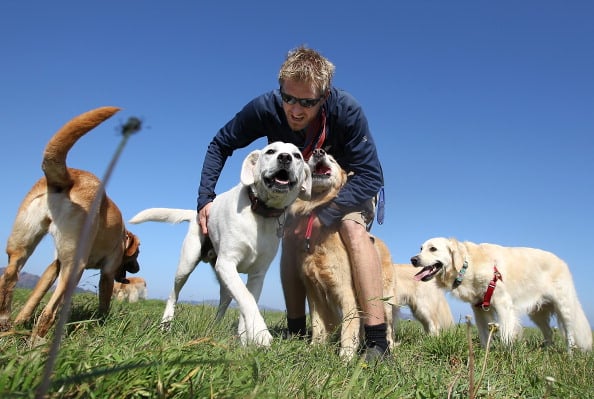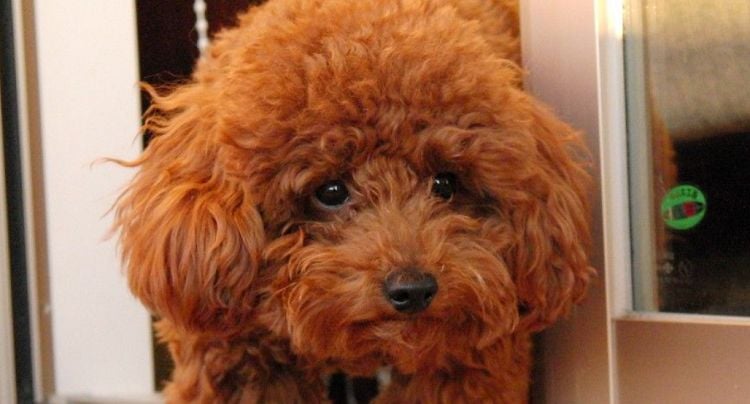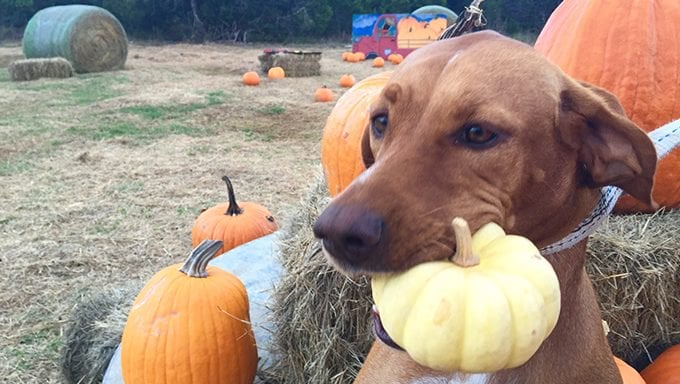20 Dog Commands That Are Extremely Useful

Training your dog can be a fun experience but it can also be challenging. A properly trained dog can make a huge difference in how well the relationship between you develops. Neither of you will be happy if you’re constantly cleaning up messes or replacing damaged items. A well trained dog is a happy dog and the owner is much more please with their beloved pet. Whether you have a new puppy or are giving instruction to an older dog, the task can be time consuming and frustrating for both of you. When you have a few tricks up your sleeve the process can go much faster and easier.
Here are 20 dog commands that are extremely useful and how to teach them to your pet (each with instructional video).
1. Teach your dog to come when you call their name
This is usually one of the easiest commands to teach your dog, that is unless you don’t use his or her name very often. Communication with your dog is very important and one of the first things that they need to learn is to come when you call them by their name. This is useful because it teaches them to listen and to respond in the appropriate way. Use your dog’s name when you talk to him and reward him with positive feedback when comes at the call of his name. If he doesn’t pay attention, let him know that the behavior is unacceptable without violence or cruelty. Dogs are smarter than what many people give them credit for.
2. Teach your dog to watch you
Dogs, especially young ones can be easily distracted. This can interfere with their ability to listen. Learning to watch you helps your dog to focus their attention so you can give further commands. To do this, start in a controlled environments where there aren’t many distractions. Focus on the dog looking at him. Place a treat in each hand and bring both to the dog’s nose so he can see them. Extend your arms and keep the above the dog’s reach. Remain silent. When your dog meets eyes with you, reward them and tell tehm yest.continue this exercise until the dog knows that making eye contact gets him a reward. Next, insert the words Watch me each time and follow the same actions.
3. Yes and No
Yes and No are vital commands that every dog should learn. This is done by using both positive and negative reinforcement. When your dog obeys you, use yes. When they do not, use no with the appropriate body language and tone of voice that lets them know they’ve done something wrong. A dog that knows yes and no and obeys will be well mannered and easier to control in most situations.
https://www.youtube.com/watch?v=AKi8bqgsu1I
4. House breaking
House breaking your dog to go to the bathroom outside can be one of the most grueling and frustrating tasks for a new owner. It takes consistency. The best way is to train them how to eliminate on the spot. This is called the “Get Busy” command. Select a location for the dog to eliminate. Take them to that spot each time that you let them out. It is preferrable to have them on a leash. Stay in the same spot until your dog eliminates. The moment they do so keep repeating the “Get Busy” command until they are done. Give your dog praise each time they finish. Repeat these steps every time you take your pet out until they “Get busy” on demand.
5. “Come”
This is also a very important command. Your dog must learn to come when you give the command to return to you. This can save you a lot of walking or running in some cases. It can also help to keep your pet safe. It’s no fun to chase a runaway dog down busy city streets. Make sure that you have a toy or treat on hand to entire your dog. Give the command to “come.” Every time you give the command and the dog obeys, use positive reinforcement. Praise them and give rewards When you are first teaching them.
6. Sit
The sit command is one of the easier ones to teach your dog and it is important to teach him this type of obedience. Give the command to sit verbally. Use your finger to point towards the ground. Hand gestures are also good signals that your dog will understand. You may need to get down on the ground and physically position the puppy in a sitting position until they understand what you mean. Most dogs learn this one quickly. Each time your pup sits on command initially, give them a treat and reward them verbally. Eventually lose the treat and keep the praise.
7. Kennel (go in a crate)
If you keep your dog in a kennel, this is an important command. Many people choose to have their dogs sleep in a kennel overnight to prevent chewing and eliminating in the home. This command lets them know that it is time to return to their kennel. You’ll need to start with a few treats. Get the dog’s attention by using the Watch Me command. Tell them to kennel and point to the kennel. If they go inside give a treat and praise. If not, use a treat to entice them in. Repeat these steps until they go inside without the treat. Use positive reinforcement.
8. “Down”
This is another important command to keep your dog from jumping up on people or in places they shouldn’t be. In order to teach them the down command, start with a few treats. There are a few ways to do this. The easiest is to watch your dog until he lays down. When he does give him a treat. Repeat this a few times, then start interjecting the command down. when he minds give him a treat. The reinforcement will help him to learn that this is a good thing to do because it gets him treats and praise. You can discontinue the treats once he knows the command.
9. Settle
The Settle command is short for settle down. It comes in handy when your dog gets agitated or rowdy. When the dog is too excited, use the command “settle.” Keep your tone soothing but firm. Do not physically comfort your dog while teaching this command until he has settled down. Stay calm yourself and don’t touch or praise the pet. Simply give the command when needed in a no-nonsense tone.
10. Heel
This command is very useful for making the dog walk to your left side instead of bounding ahead. Start with your dog on a leash hooked to a belt loop of your left. Give the dog a treat when they are on your left side. Next, start using the word “Heel” or you can substitute it with other words such as Let’s go if you desire. Only give the dog treats when he is by your left leg, but reward him when he does. Let him get used to hearing the words of the command. After he understands what you mean, start the training again without the leash until he is fully trained and obeys the command.
11. Fetch
Fetch is one of the more fun commands if you enjoy playing with your pet. Many puppies do this naturally but it’s good to incorporate the word so they know what it means. Start with a favorite toy and make sure the dog sees it and wants it. In other words, entice them. Next throw the object and tell the dog to fetch or get it. When he brings it back, tell him to release. When he does, give him a reward and praise. If there is a fight, there is no reward. Soon they will learn that obedient behavior is rewarded as the come to understand the meaning of the words you are using.
12. The Stay command
The stay command is important when you are introducing your dog to new people or environments. It isn’t always appropriate for the dog to stand or walk around. After giving your dog the sit command, tell him to stay and slowly walk around him with one hand on his back to hold him in position. If he tries to get up, correct him with a no and push him back down. Repeat this and for every time he stays, give him an enthusiastic yes and give him a treat. Continue doing this and as he makes progress in obeying the command, move further away from him until you are in the next room.
13. “Show Belly”
The show belly command helps you to have access to your dog’s belly for care and to give him affection. Begin by putting your dog on a leash. Start in a quiet place with no distractions and have a few treats on hand. Give the down command. Give him praise for obeying. Hold a treat in your hand so he can see it and say show belly. Move the treat in a direction that causes him to drop on his side. Entice him to move onto his back with the treat and repeat, show belly. Praise him and repeat the command and stroke his belly. Show hm that you’re pleased. Allow him to get up to eat his treat. Repeat until he learns the command. If he tries to get up tell him no firmly and repeat the command.
14. Snuggle
This command is a good way to let your dog know that its okay to show affection. It helps you to bond with your dog and strengthens the relationship in both directions. Start by telliing your dog that you want to hug him. Give the sit command and as you extend your arms for the hug, call him by his name and say snuggle. Give him a small hug. Repeat yes, good snuggle to your dog in a soothing and calm voice. If the puppy gets excited tell him no, stay. It may take a while for your dog to get used to the snuggle command so start the training with short hugs and make them longer as his comfort level increases.
15. Kiss
The Kiss command lets your puppy know that its okay to lick. Some dogs are natural lickers and will be happy that they are allowed to give you kisses. This is a way of bonding with your pet. Call your puppy over and as he begins to lick you tell him Kiss and praise him. When it’s time to stop the kissing you can give him a sit command.
16. Jump on and Jump off
Jump on can be a handy command when you need your dog to jump from one place to another. Jumping off can help you to get him to move back to the floor or ground. Start with a sturdy place to jump on to that is not too high. Put a leash on your dog and have a handful of treats. Let him see the treats and entice him with a small treat to jump on the sturdy surface he will jump on to. Tell him Jump on and encourage him. When he does praise him saying yes, jump on, good job and give him the treat. Use the Stay command and have him remain in place a few moments. Next, call him by name and say off. With a treat in hand, make a downward gesture with your arm and hand and when he jumps tell him yes, good, jump off and give him a treat. Repeat these steps until your dog has mastered jump on and jump off.
17. Speak and Quiet command
There is a time when your dog should be vocal and a time when they should not. The Speak and Quiet commands will help them do the right things at the right times. Wait until you believe your puppy is about to bark and say his name along with “speak.” Praise him and give him a treat each time. Try to say the speak command just in advance of when he is ready to bark and repeat the steps until he understands the command and that he will get a treat for it. Once he understands the speak command it will be easier to teach the quiet command. Ask hi to speak and praise him. While he is barking say his name and quiet in a firm and louder voice. When he is silent praise him and give him a reward. Repeat the steps until your dog has mastered the quiet command.
18. The Load command
This is important for loading and unloading your dog into a vehicle. This should be done after your dog has learned the other more basic commands including sit, stay, down and jump on. Place your dog on a leash and walk him to the vehicle. Tell him to sit and stay. Open the door. When you are prepared tell your dog Load. coax him into the vehicle. If there is hesitation, tap on the car interior to indicate where you want him to go. Praise him and repeat the load command. Repeat until your dog understands the load command. Next teach him the Unload command. Open the door and put his leash on. Repeat the stay command until you are ready for him to exit. Next, ask hin to unload. When he gets out, give the sit and stay command and repeat yes, good, unload and give him praise.
19. Paw shake command
The paw shake is a lot of fun for both you and your dog. Begin in a quiet environment where just you and the dog are present. Give the sit command and don’t forget to praise him. Get his attention and say his name and the command shake. Gently pick up his paw and hold it for a few seconds. Release the paw and praise him along with a treat and repeat yes, shake, and his name. Repeat until he shakes on command.
20. Go to bed
It’s important that your pet goes to bed when he is told to. Begin with your dog’s special place or sleeping. Only use the command for going to sleep and not as a punishment. Get the dog to focus on you while he is on a leash. Keep a treat in your hand and say the dog’s name and “go to bed.” When he is in the spot he is to sleep give the down and stay commands. Praise him with a yes and a treat. Pet the dog and make him feel comfortable so he will know that this is a calm place. Repeat the command go to bed. Repeat the command along with stay and walk away. If the dog gets up, say no and repeat. Increase the amount of time that you are gone to try to get the dog to stay in bed. When your dog catches on, remove the leash and continue to practice until the command is clearly understood and the dog obeys. Give praise and treats for a job well done.






